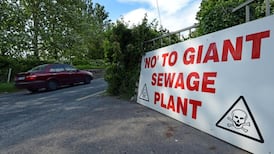Are there any hard scientific facts behind the graphs and diagrams so beloved of advertisers? asks Joe Humphreys
SCIENCE AND advertising have always had something of a fraught relationship. Explaining complex technology is not easy at the best of times. But what if you have only 20 seconds to get your message across, and are also trying to sell a product on the back of it?
Faced with this dilemma, most advertisers plump for style over substance. Audi, for instance, does not waste its time explaining its new anti-lock braking system, or advances in power-steering. Instead, it shows us a bald, spectacled man in a lab coat carrying a clipboard (ie your stereotypical boffin) performing tests at an assembly plant before a sole voice-over line is delivered: "Vorsprung durch technik."
Food, cosmetics and pharmaceutical companies often plump for super-realistic graphics.
Bad bugs are dressed in black (boo!), and good bugs white (hurrah!) as they do battle in an animated digestive tract. Hair ends are split open to reveal a secret world of bubbly molecules, and outlandishly out-of-scale lumps of dandruff. "Now for the science bit," proclaims L'Oréal Elvive, as it leads us by hand into such dizzying, fantastical graphics.
Part of the problem is that few scientific claims can be made without qualification, and advertising watchdogs are today quick to clamp down on exaggerated claims.
Some years ago, cat-food company Whiskas could get away with a line like "eight out of 10 cats prefer it". Now, however, advertising-standards authorities would ask: "Prefer Whiskas to what exactly?" and "How precisely did you consult the cats?"
Note that Whiskas dropped its famous slogan in 2004 for the altogether less emphatic: "Whiskas - Be happy."
ONE ADVERTISER THAT HAS pushed the boundaries out more than others in this area is the French food giant Danone. Not only is it branding its products with the logo "scientifically proven" (complete with a natty image of a microscope), it has incorporated scientific graphics in its advertising to further convey the impression that it is a company that doesn't mess with the truth.
The "scientifically proven" stamp is a risky one in that it implies the claims that are made for its products are a cut above the claims made for other products in advertising. The message is: our competitors' goods are supported by "clinical tests" or "widespread research" but ours are (cue trumpet blast) "scientifically proven" to do what they say they will do.
The label is also, of course, a red rag to the bull that is the vigilant consumer, and Danone has fallen foul of European advertising watchdogs on a number of occasions, particularly in relation to promotions for its probiotic drink Actimel.
Whatever about Actimel's proclaimed value in helping to "strengthen your natural defences", there is something puzzling about the television ad broadcast in Ireland for the product, specifically in its use of a graph labelled "over 30 studies".
The graph has a horizontal (X) axis, and a vertical (Y) axis, and a line shooting up at 45 degrees from the origin, but there is no explanation as to what is X or Y.
Is X the number of yoghurt drinks you consume daily, and Y the improvement in your "natural defences" (whatever exactly that means)? Is X consumer gullibility and Y Danone shareholders' profit (industry figures show Actimel notched up sales of €132 million in the UK last year)?
A spokeswoman for Danone explains: "The graph is designed to communicate that a number of studies have been undertaken and published over a specific period of time."
But this raises a further problem. If X is "time" and Y is the "number of studies", the graph (rising at a "perfect" 45 degrees) implies that research on Actimel is carried out at precise and unchanging intervals. In fact, such research has been carried out sporadically over the past 12 years (through, incidentally, Danone's research centre in Paris with what the company describes as independent research laboratories).
On its website, the company lists 31 published papers on Actimel. These range from one study in each of the years 1995-1997 to five studies in each of the years 2004 and 2005. There were three published studies in 2006, and two in 2007.
The graph, then, is inaccurate. Danone, however, appears to be unwilling to accept this fact.
"Due to the fact that the graph is only on screen for a couple of seconds and the ability to provide a lot of detail is limited, the representation of time and volume is done in a very straightforward manner," the spokeswoman says. "While the graph does not call out the years when each individual study was published, it does accurately convey that over 30 studies were published during the timeframe indicated."
But there is no "timeframe" indicated in the advertisement. Asked whether the graph is deliberately designed to be ambiguous, the spokeswoman replies: "At all times Danone Ireland seeks to communicate with clarity."
Danone's offence is perhaps not the greatest to be committed by an advertiser. But using science in this manner is unhelpful to both consumer and producer.
This viewer, for one, is left asking whether the graph in the Actimel ad is designed not so much to be scientific but to seem scientific? And if so could the same be said of the producer's own research?






